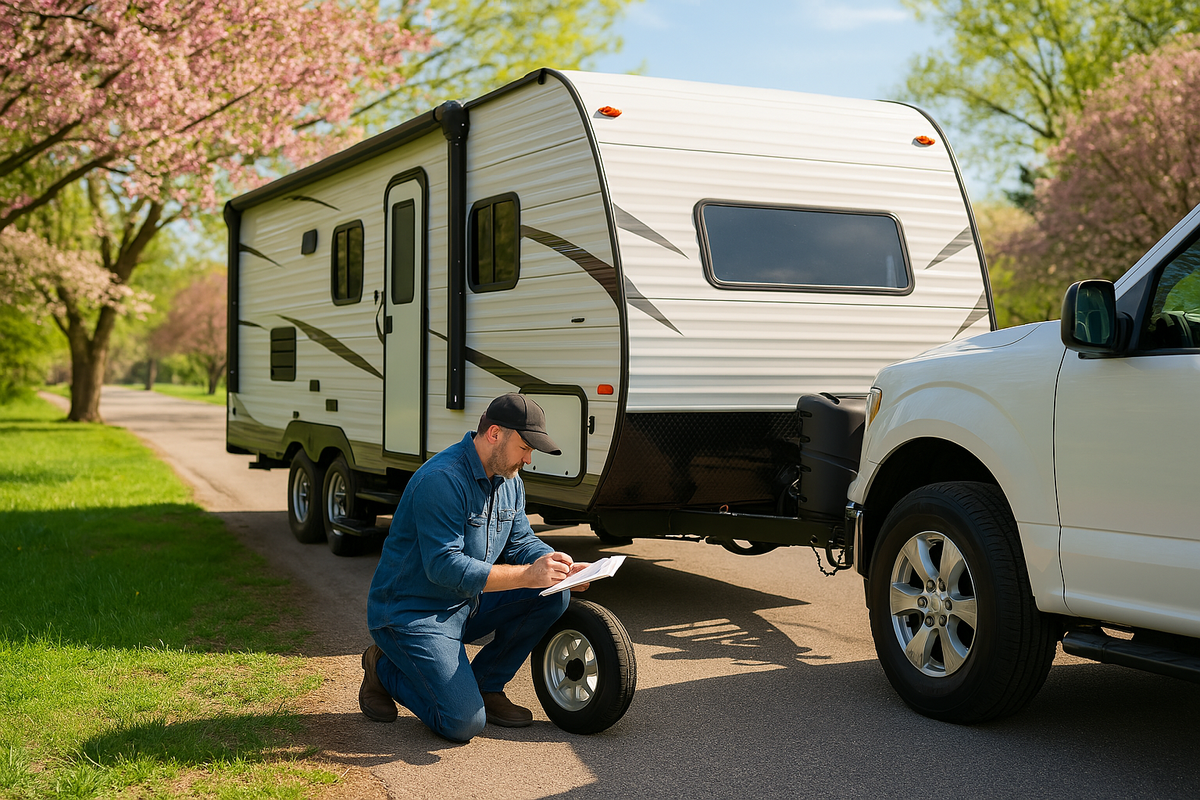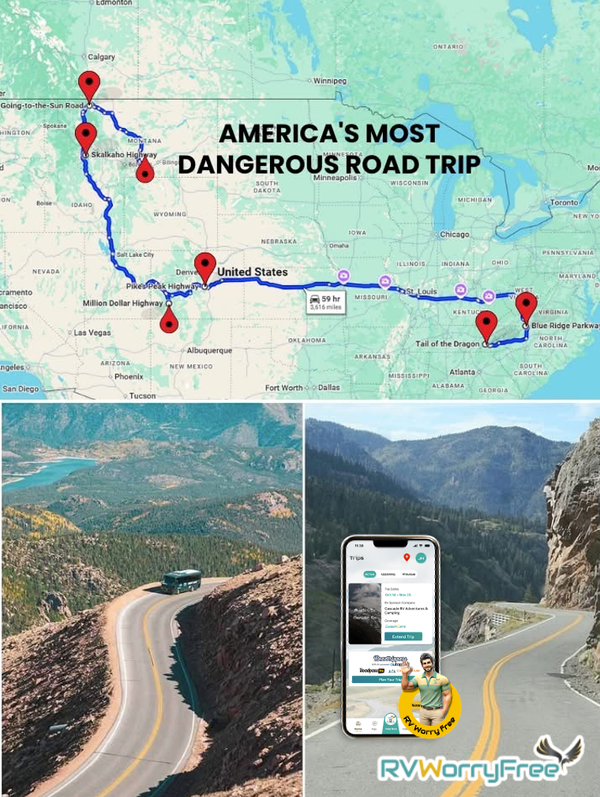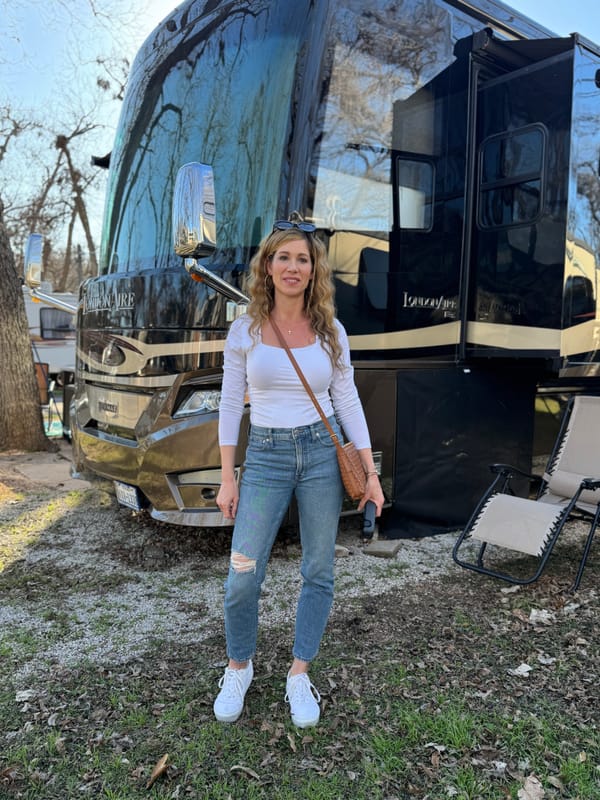Spring RV Safety: Road-Ready Tips for Towing Season

By Mike Realnando – RVWorryFree Contributor
When the weather starts warming up, there’s one thing on every RVer’s mind—getting back on the road. Spring signals the return of weekend escapes, national park bucket lists, and boondocking bliss. But before you hitch up and roll out, it’s time for a good old-fashioned systems check.
After more than a decade on the road (and more than a few lessons learned the hard way), I can tell you this: towing season isn’t something you want to ease into without preparation. Here’s how I make sure my RV—and my sanity—are road-ready every spring.
- Don’t Skip the Pre-Departure Checklist
This isn’t a suggestion—it’s a ritual. Every trip, I start with a walkaround inspection, but especially after a long winter break. Check tire pressure on your rig and your tow vehicle—including the spare. Tighten the wheel lug nuts to spec, and inspect the tires for cracks, uneven wear, or anything lodged in the tread. I’ve seen more than one trip derailed in the first 50 miles from skipping these basics.
My tip? Keep a laminated checklist in your RV so you never forget the essentials. Trust me—future you will thank you.
- Load Like a Pro: Balance Is Everything
I’ve seen it too many times—a tail-heavy trailer fishtailing its way down the interstate. Not only is it dangerous, but it’s also preventable. The golden rule? Keep about 60% of the total load weight in front of the axle. Secure loose items, double-check drawers, and never assume “close enough” is good enough when it comes to load distribution. A properly loaded trailer makes for a safer, smoother drive—and fewer white-knuckle moments. - Know Your Stopping Power (and Limitations)
Towing adds serious weight, and with it comes a much longer stopping distance. This isn’t the time to tailgate. Give yourself plenty of space, and go easy on the brakes. Prolonged braking heats things up fast, which means reduced effectiveness when you need it most. On long descents, downshift early and take it slow.
Your brake controller is your best friend. Learn how to use it and test it before every trip.
- Watch the Weather—and Respect It
Rain, wind, and snow aren’t just bad for your Instagram feed—they change how your trailer handles. Always check the forecast before departure and during your route. A gusty crosswind can make towing feel like a wrestling match.
I’ve been in situations where slowing down by just 5–10 mph made the difference between a white-knuckle ride and a relaxed cruise. Respect the road—and what it throws your way.
- Trailer Sway? Don’t Panic—React the Right Way
Feel your trailer start to sway? Here’s what NOT to do: Don’t slam on the brakes. Don’t jerk the wheel. Instead:
- Ease off the gas
- Keep the wheel straight
- Let the sway settle
If you have a brake controller, gently apply the trailer brakes to help regain stability. Sway happens, even to the pros—but how you react makes all the difference.
Finally, remember this: knowing how you're going to access on-the-road support ahead of a disaster has proven key to our successful adventures over the years. Planning for roadside assistance before trouble hits means less stress and more smiles when unexpected issues occur.
Whether it’s your first trip of the season or your fiftieth, towing safely starts with good habits and smart prep. Take the time to run through your checklist, inspect your rig, and respect the road—and you’ll be setting yourself up for a smooth and safe spring season.
See y'all out there,
Mike Realnando





